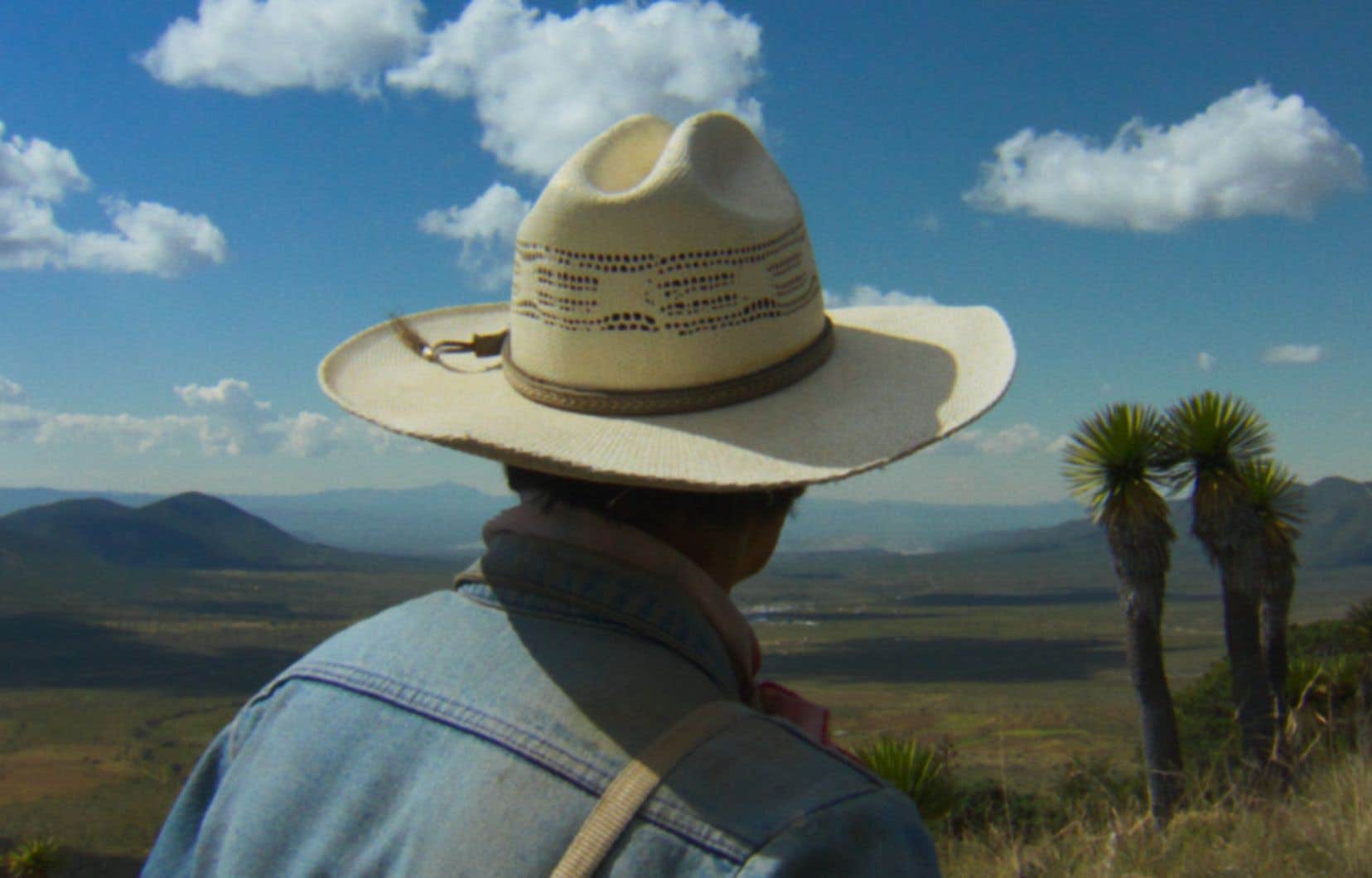A man’s back in a cream-colored hat contemplates a mountainous panorama of the state of Zacatecas. As he gradually disappears from the screen, a dense forest appears, in the heart of which an increasingly large oil well stands out.
Those who oppose this type of exploitation take considerable risks. Mexico is one of the places in the world with the highest number of killings of environmental defenders. The filmmaker Julien Elie decided to capture the faces, the reflections and the landscape of those who fight against extractivism, in the four corners of this great Latin American country.
The starting point of The White Guard appeared at the bend of an isolated road in the state of Guerrero, while the Montreal director was working on his previous documentary, Black suns. The latter dealt with violence against vulnerable groups, particularly women, and the impunity of attackers.
“We were in an area deserted by civilian populations, who had fled the violence of drug traffickers. All we saw was the army and huge trucks. We followed these trucks, and at the end of the road, in a valley, we saw a huge mining company in full activity,” says Mr. Elie, in an interview in the premises of the post-production company CineGround, in Le Plateau- Mont Royal.
How did this company manage to conduct business as if nothing had happened in this dangerous place? Throughout the film, testimonies point to collusion between private companies and organized crime. Lawless zones surround many places where natural resources are extracted. Impunity is total, with the murderers never being brought to justice. Terror is in the background. The insecurity was such that the film crew had to be escorted to several seemingly heavenly remote locations.
In a village where the population opposed a dam project, five leaders were killed. An indigenous family is forced to leave their ancestral lands because several members were executed after denouncing deforestation and the granting of a mining concession. A goat breeder contests the eviction of his community from his native village, under which an underground mine is located.
I think that I could, unfortunately, have shot a similar film in a few dozen countries in Africa, the Middle East, Asia and especially Latin America, where defenders of the earth are murdered
The documentary well conveys the anxiety induced by a furtive but very real threat, supported by a disturbing soundtrack. Through strong testimonies and magnificent images, the mosaic film focuses on feelings. The factual elements remain rather vague. We do not detail any particular case, nor do we target a specific company.
“I wanted continuous movement, as if it were a single character. For me, it’s the same story almost everywhere, that trees are cut down, that water is stolen, that holes are dug. These are the same mechanisms of appropriation of territory, the same mechanisms of repression,” explains Mr. Elie, who recalls that the abuses and disturbing activities of transnational companies in Mexico have been documented by numerous journalistic investigations and carried out by non-governmental organizations.
The territory as a victim
The territory is depicted as being the main victim. The images filmed on board a plane over devastated areas are frightening.
“The film opens with a zoom-out of more than three minutes on a tree,” underlines the filmmaker. This shot is very important, because I wanted the viewer to feel a threat in front of them. There is something that gradually becomes distressing in front of this tree and the duration of the shot. What I wanted to show is that humans, in a region called wilderness, tend to describe this place as dangerous. But in fact, we are the danger. »
The documentary will be presented in around twenty theaters in Mexico. It also has international resonance. On the one hand, the majority of mining companies that exploit this territory are Canadian. On the other hand, the appropriation shown there has been taking place for hundreds of years almost everywhere on the planet.
“I think that I could, unfortunately, have shot a similar film in a few dozen countries in Africa, the Middle East, Asia and especially Latin America, where defenders of the earth are murdered,” laments Mr. Elie.
These stories are worth telling, even if the director “doesn’t make films to change the world.” Several of his creations also expose certain forms of colonization. His next documentary, which is currently in the post-production stage, is no exception. It concerns the conquest of space, a priority target of several multinationals, which threatens to disfigure our skies.
The White Guard hits theaters on April 26. Film meetings are organized with the director until May 5 during a few screenings in several theaters.
